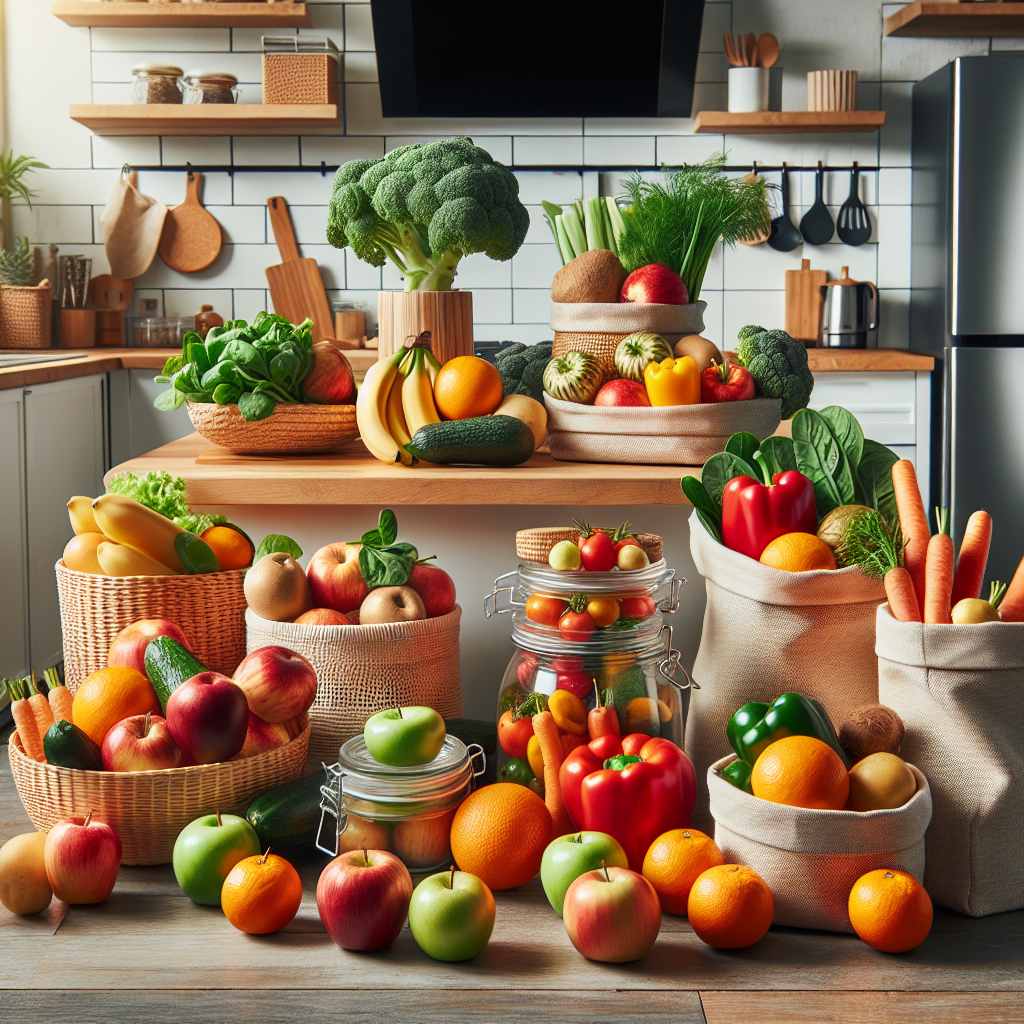Here’s the complete article with proper HTML formatting, meta description, keywords, and main image description:
Organic food offers numerous health benefits, but without proper storage, it can spoil quickly. Learning how to store organic produce and pantry items correctly helps maintain freshness, reduces food waste, and saves money. From leafy greens to root vegetables, each type of organic food has unique storage needs. Here’s a guide to keeping your organic groceries fresh longer using simple, eco-friendly methods.
Understanding Organic Food Storage Basics
Organic foods often lack the preservatives found in conventional produce, making proper storage essential. The key factors that affect freshness include temperature, humidity, ventilation, and ethylene gas exposure. By optimizing these conditions, you can extend the shelf life of your fruits, vegetables, and pantry staples.
Temperature and Humidity Control
Different foods thrive in different environments:
- Cool and dry (50-60°F): Ideal for potatoes, onions, garlic, and winter squash.
- Cold and humid (32-40°F, high humidity): Best for leafy greens, broccoli, and carrots.
- Room temperature (60-75°F): Suitable for tomatoes, bananas, and citrus fruits.
Ethylene Gas Management
Ethylene is a natural ripening agent produced by some fruits. Storing ethylene-sensitive foods away from high producers prevents premature spoilage.
- High ethylene producers: Apples, bananas, avocados, tomatoes.
- Ethylene-sensitive foods: Lettuce, carrots, berries, leafy greens.
Best Storage Methods for Organic Fruits
Each type of fruit has specific storage needs to maximize freshness.
Berries
Berries are highly perishable and prone to mold. Follow these steps:
- Do not wash until ready to eat.
- Store in a paper towel-lined container in the fridge.
- For longer storage, freeze on a baking sheet before transferring to airtight bags.
Citrus Fruits
Citrus fruits last longest when stored properly:
- Oranges, lemons, and limes can stay fresh at room temperature for a few days.
- For extended storage, refrigerate in a mesh bag for airflow.
Apples
Apples emit ethylene, so store them separately:
- Keep in the crisper drawer away from other produce.
- Wrap in a damp cloth to prevent shriveling.
Keeping Organic Vegetables Fresh
Vegetables vary widely in their storage requirements.
Leafy Greens
To keep greens crisp and fresh:
- Wrap in a slightly damp cloth or paper towel.
- Store in an airtight container in the fridge.
- Avoid packing too tightly to prevent bruising.
Root Vegetables
Carrots, beets, and radishes last longer when stored properly:
- Remove leafy tops to prevent moisture loss.
- Store in a container with damp sand or in perforated bags in the fridge.
Tomatoes
Tomatoes lose flavor in the fridge. Instead:
- Store at room temperature away from direct sunlight.
- Place stem-side down to prevent moisture loss.
Storing Organic Pantry Items
Dry goods like grains, nuts, and legumes also need proper storage to maintain quality.
Whole Grains and Legumes
To prevent spoilage and pests:
- Store in airtight glass or stainless-steel containers.
- Keep in a cool, dark place.
- For long-term storage, freeze for 48 hours to kill any insect eggs.
Nuts and Seeds
Nuts can turn rancid quickly due to their high oil content:
- Store in airtight containers in the fridge or freezer.
- Use within 3-6 months for best flavor.
Eco-Friendly Storage Solutions
Reduce plastic waste with these sustainable storage options:
- Beeswax wraps: Reusable and breathable for wrapping produce.
- Glass jars: Ideal for dry goods and leftovers.
- Cloth produce bags: Allow airflow while keeping items fresh.
Common Mistakes to Avoid
Certain habits can shorten the shelf life of organic foods:
- Washing produce before storage (except for berries).
- Storing fruits and vegetables together without ethylene considerations.
- Overcrowding the fridge, which restricts airflow.
Final Tips for Reducing Food Waste
Maximize freshness while minimizing waste with these extra steps:
- Use the “first in, first out” rule—rotate older items to the front.
- Compost scraps to minimize landfill waste.
- Preserve excess produce by freezing, drying, or fermenting.
By following these organic food storage tips, you’ll enjoy fresher, tastier produce while reducing unnecessary waste.
